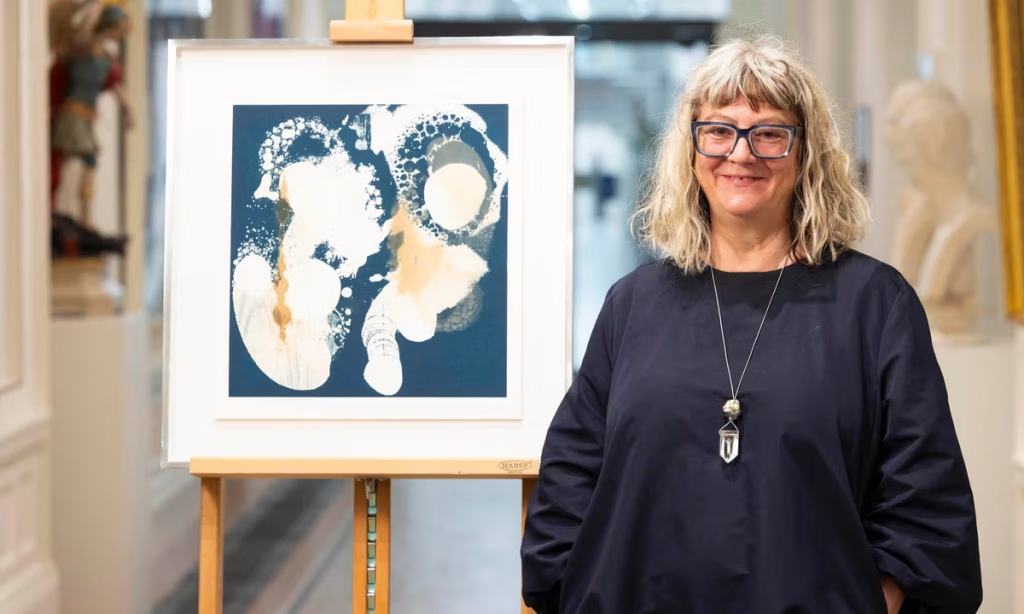The Scottish-born artist Anya Gallaccio has created the latest commission for the UK Government Art Collection (GAC), the Department for Culture, Media & Sport announced today.
The series of screen prints depicts whale songs which, according to the artist, also explore the importance of diplomacy for an island nation. She says it is key that the work will be shown in embassies.
“I started thinking about whales and how they communicate and how oceans connect us,” Gallaccio says. “…And then started thinking about the role of ambassadors, soft diplomacy and how nation states communicate with each other.”
The artist also explains how she approached the piece from the perspective of a sculptor. “I wanted it to be a physical, tactile object. Parts of it are 3D, almost like braille. Each print is unique,” she says.
To create the work, entitled eight hours of whale song (2025), Gallaccio played recorded whale songs through a drum covered in pigment which shifted as the animal noises were played. These movements became the basis for a print made using relief and the wood burning process, pyrogravure.
The new prints, which are an edition of 30, are part of the Robson Orr Ten Ten Award, a ten-year scheme through which a UK artist is commissioned to create a limited edition print to be shown in diplomatic buildings worldwide. The project—funded by the film and stage producer Sybil Robson Orr and her husband, Matthew—launched in 2018, with the inaugural award given to the artist Hurvin Anderson. Other previous winners include Yinka Shonibare (2020) and Tacita Dean (2019).
Fifteen copies of the print go to the government collection for display in official buildings in the UK and embassies abroad. Eleven others are available for sale with proceeds going towards acquiring works by artists under represented in the Government Art Collection.
Gallaccio’s print will form part of a new education initiative, Picture This: The Robson Orr Visual Literacy Research Initative, a partnership between the Robson Orr Foundation, the University of Oxford, GAC and Art UK. Secondary school teachers will use the work to boost the “visual literacy” of Key Stage three students aged 11 to 14.
